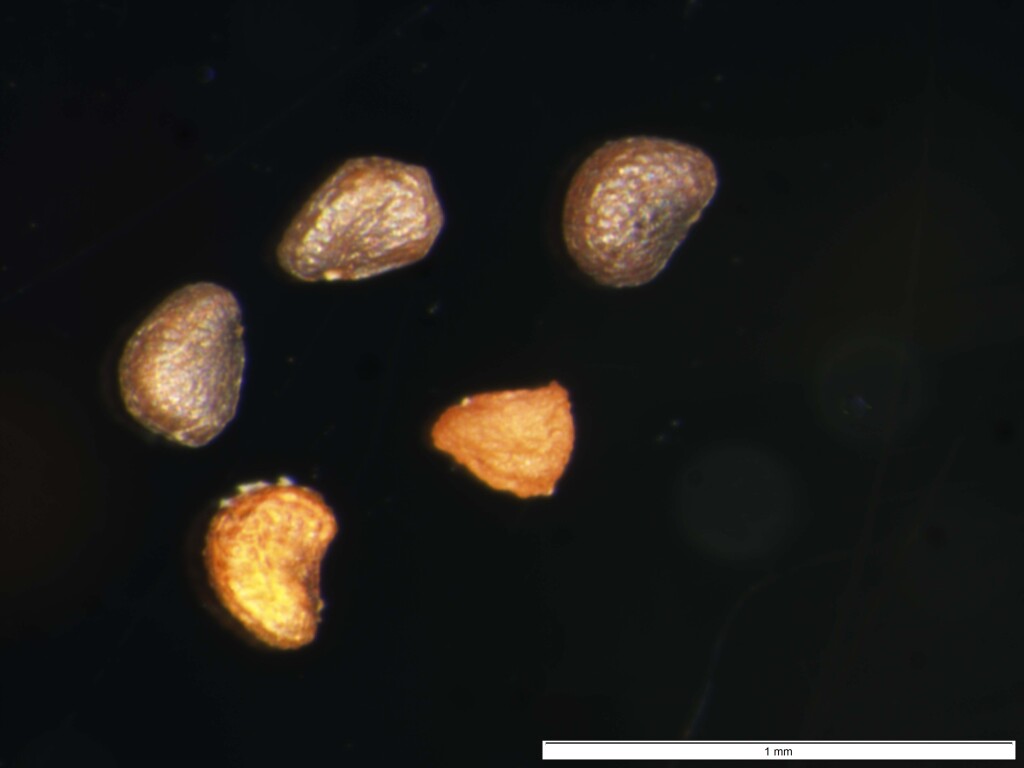Sagina procumbens
L. Spreading PearlwortPerennial with fibrous roots, often adventitious from nodes, glabrous or rarely minutely ciliate. Stems mat-forming, up to 20 cm long, with dense, non-flowering central leaf-rosette. Leaves linear-subulate, acuminate, more or less mucronate, glabrous or ciliate, 5–15 mm long, 0.3–0.8 mm wide. Flowers 4(–5)-merous; pedicels glabrous, erect in flower, then curving and re-erecting in ripe fruit, 5–13 mm long; calyx glabrous, sepals broad-ovate to suborbicular, with narrow scarious margins, 2–2.5 mm long, spreading in ripe fruit; petals minute, white, often absent; stamens 4; styles 4. Capsule ovoid, longer than sepals, 2–4 mm long; seeds dark brown, oblique-reniform, more or less grooved dorsally, weakly to strongly tuberculate, 0.3–0.5 mm diam. Flowers Sep.–Feb.
LoM, MuM, GleP, VVP, VRiv, GipP, OtP, WaP, Gold, CVU, GGr, DunT, NIS, EGL, EGU, WPro, HSF, HNF, OtR, Strz, MonT, HFE, VAlp. Also naturalised WA, SA, Qld, NSW, New Zealand and elsewhere in the Southern Hemisphere. Native to Europe, Asia, North America. A very widespread weed of damp places, cultivation, lawns, paths and waste ground in more temperate parts of Australia.
Adams, L.G. (1996). Caryophyllaceae. In: Walsh, N.G.; Entwisle, T.J., Flora of Victoria Vol. 3, Dicotyledons Winteraceae to Myrtaceae, pp. 228–271. Inkata Press, Melbourne.
 Spinning
Spinning




